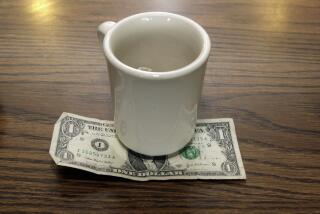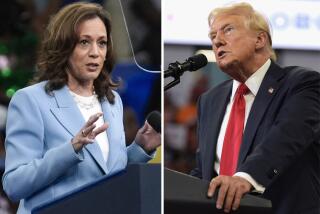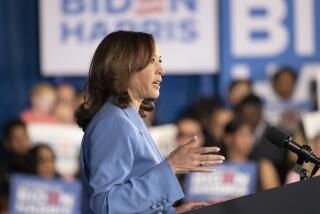IRS Begins Plan on Restaurant Workers’ Tips : Taxes: Participants are promised relief from gratuity income audits. But O.C. group says it pressures employers.
LAGUNA NIGUEL — Never one to pass up a good tip--or even a measly one--the IRS on Tuesday launched a nationwide program to increase tax revenue from restaurant workers’ often-underreported gratuity income.
As do many government plans, the voluntary Tip Rate and Education Program requires owners of participating businesses--principally restaurants, bars and cocktail lounges--to fill out a batch of new paperwork. Restaurant owners also would have to encourage their employees to sign up in order to make the plan work.
That has fueled opposition from the National Restaurant Assn. and most of its state affiliates, including the California Restaurant Assn.
“Our problem with it is that the IRS seems to be putting pressure on employers to force their workers to report higher tips,” said Michael Rhodes, president of the association’s Orange County chapter and owner of Frontier Restaurants, an Orange-based chain that operates the Knowl-Wood and Russell’s Famous hamburger chains.
The Internal Revenue Service says it is offering a pretty big carrot: Restaurants with at least 75% employee participation are being promised relief from the agency’s tip income audits. And employees who participate and report tips at or above the agreed-upon rate for their restaurant also would be exempted from tip audits, which can involve an IRS check of financial records as far back as 1988.
Employees found to have underreported tip income are assessed back taxes and, potentially, penalties; their employers are required to pay federal Social Security taxes on the unreported tip income.
The audit exemption might make some employees happy, but restaurant owners, Rhodes said, see it as a cudgel, not a carrot. “It puts the restaurateur in the middle by pressuring us to force our employees to report more tip income” in return for relief from potentially costly tip audits, he said. “The employer should not be serving as a tax collection agent.”
Rhodes, whose 13 restaurants are mainly fast-food types in which tipping is rare, said his industry also is irked because “car washes, beauty shops and all the other places” where tips are a big part of employees’ income aren’t included in the program.
He said the National Restaurant Assn. has begun lobbying in Washington for congressional action either to do away with the plan or to revise it to relieve employers of responsibility for employees’ tip reports.
In the food industry, servers, bartenders and others who deal directly with the customer now are presumed by the IRS to make at least 8% of their income from tips. “If you don’t report at least 8%, you know they are coming after you,” said Robby Robfogel, manager of the Crab Cooker in Newport Beach.
But because the traditional tip in a restaurant is 15%, that leaves a big potential gap that the IRS wants to close.
The new plan offers participants a personalized tip reporting rate based on their employers’ reports of each restaurant’s tip income over a previous six-month period and the way it is usually divided among that restaurants’ workers.
“The rate reflects the unique characteristics of each restaurant and is a fairer way to report tip income,” said Jesse Cota, director of the IRS’s Laguna Niguel district, which covers Southern California from the South Bay area to the Mexican border--an area with more than 1,000 restaurants.
The rate will differ for each restaurant and in many cases will differ among employees because part of the calculation reflects the number of customers served who do not tip, tips that employees share with other restaurant employees, such as busboys and dishwashers, and the difference in the amount of tips received during different work shifts.
Food servers on dinner shifts, for example, typically earn more in tips than do lunch shift servers, because the costs of the meals are often higher and a higher percentage of diners leave tips.
While food servers likely would end up paying more taxes because of the 15% tip standard, others in the restaurant industry might get a break, Cota said.
“Everyone knows that the hostess who handles carryout orders does not receive tips at the same rate as regular food servers. Charging the hostess the same tip rate as a food server is not an accurate reflection of tip income.”
* WHERE TO CALL: Restaurant owners and employees who receive tips can telephone the IRS at (714) 643-4069 for an information brochure about the Tip Rate and Education Program.
More to Read
Inside the business of entertainment
The Wide Shot brings you news, analysis and insights on everything from streaming wars to production — and what it all means for the future.
You may occasionally receive promotional content from the Los Angeles Times.










